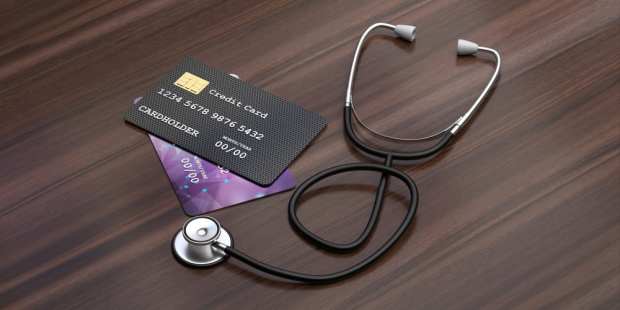Phreesia On The US Healthcare Sector’s Transition To Card-On-File Billing

Card-on-file payments can help hospitals solve cash flow problems by eliminating payment collection pains, says Markiyan Malko, vice president of Revenue Cycle Management at healthcare technology provider Phreesia. In the Digitizing Healthcare Payments Report, Malko explains how COF payments stop overdue payments from becoming common occurrences.
Healthcare providers’ budgets have suffered during the health crisis as patients cancel appointments to avoid visiting offices and governments in some regions halt elective procedures. This has pushed healthcare organizations to shore up their finances and preserve their cash flows by improving their accounts receivable (AR) capabilities.
Many are looking to solutions that can increase their likelihood of collecting timely payments from patients who are coming in during the pandemic and from the many who are expected to book COVID-19 vaccination appointments once they become eligible, as some providers are charging fees to administer the injections. Such financial concerns have made it a high priority for organizations to focus on collections and patient payments processes, Markiyan Malko, vice president of Revenue Cycle Management at healthcare technology provider Phreesia, said in a PYMNTS interview.
“At the start of the pandemic, visit volume for [healthcare practices] was significantly down,” Malko said. “It has come back over time somewhat, though [it is] probably not still fully back to normal. … With that, it’s much more important for [providers] to have some cash flow coming in.”
Collection Conundrums
More of today’s consumers have been enrolling in high-deductible health plans (HDHPs), which have patients pay for more of their healthcare expenses out of pocket before their insurance plans begin covering some of the costs. Fifty-one percent of U.S. workers participated in such plans in 2019, and HDHPs’ growth has heightened the importance of reliably collecting funds from patients.
“There’s been a lot of focus on being more efficient [about] collecting existing outstanding balances from patients and new balances,” Malko said.
This can be a complicated task, however, because patients may be unaware of how much they owe until statements have been mailed or emailed well after treatment. Even collecting payments from patients who have reached their deductibles can be tricky. There is often a long delay between treatment and billing, during which healthcare providers send claims to insurance carriers before tracking down patients for the remaining payment portions. These kinds of challenges can contribute to persistent problems regarding late and uncollected payments.
Reducing these transaction pain points can ultimately help healthcare providers retrieve more patient payments with less effort, Malko explained. He also noted that the pandemic is encouraging more healthcare organizations to turn to card-on-file solutions to create swifter, simpler payment experiences.
The Benefits Of Keeping Cards On File
More healthcare providers are adopting solutions that allow them to collect and store patients’ credit, debit, flexible spending account and health savings account card information ahead of their visits. Requests to obtain card details can be included in patients’ appointment reminder emails, for example, and those who provide the information can quickly agree to have their copays charged to these stored payment credentials as opposed to swiping or inserting cards at point-of-sale (POS) terminals during their visits. Malko explained that providers can also request permission to charge remaining bill portions to these stored credentials.
Malko added that card-on-file transactions can help providers appeal to consumers who want to minimize the time they spend in public and avoid handling cash and checks. He also stated that the ease these solutions bring to post-treatment payments has helped organizations improve their collection rates. Some patients allow automatic payments from their accounts, while others prefer to be contacted for confirmation, but both approaches can lead to better results for AR personnel seeking to complete transactions.
“A lot of practices’ staff focus is on getting a card on file, whether they can charge it automatically or not,” Malko explained. “But even with making that phone call later to try to collect, it’s much easier to say, ‘Is it alright if we charge your card on file?’ than calling to say, ‘Please give me [your] card number or send me a check.’”
Malko said these benefits make it likely that more healthcare providers will offer and encourage card-on-file payments in the long term. The pandemic has convinced many customers to try out online card-on-file transaction methods, and medical providers are discovering how taking advantage of this consumer trend can improve their financial outlooks.
“The Amazon- and eCommerce-ification of the world continues, even in healthcare,” he said. “People are just more comfortable putting their credit cards on file or checking in and making a payment online through their phones or in their browsers. We’ve seen that shift happening anyway over the years, but the pandemic — [last] spring, especially — has forced everybody into that world. I’m sure [the digital payments trend] will pull back some after [the pandemic ends], but it won’t pull back all the way, and it’ll be much more common.”
Pandemic-related cash flow strains have pushed healthcare providers to reconsider how they accept patients’ payments and to seek out digital tools that can streamline their processes and improve collection outcomes. Hospitals and clinics may find that card-on-file solutions can bring them greater financial health.

